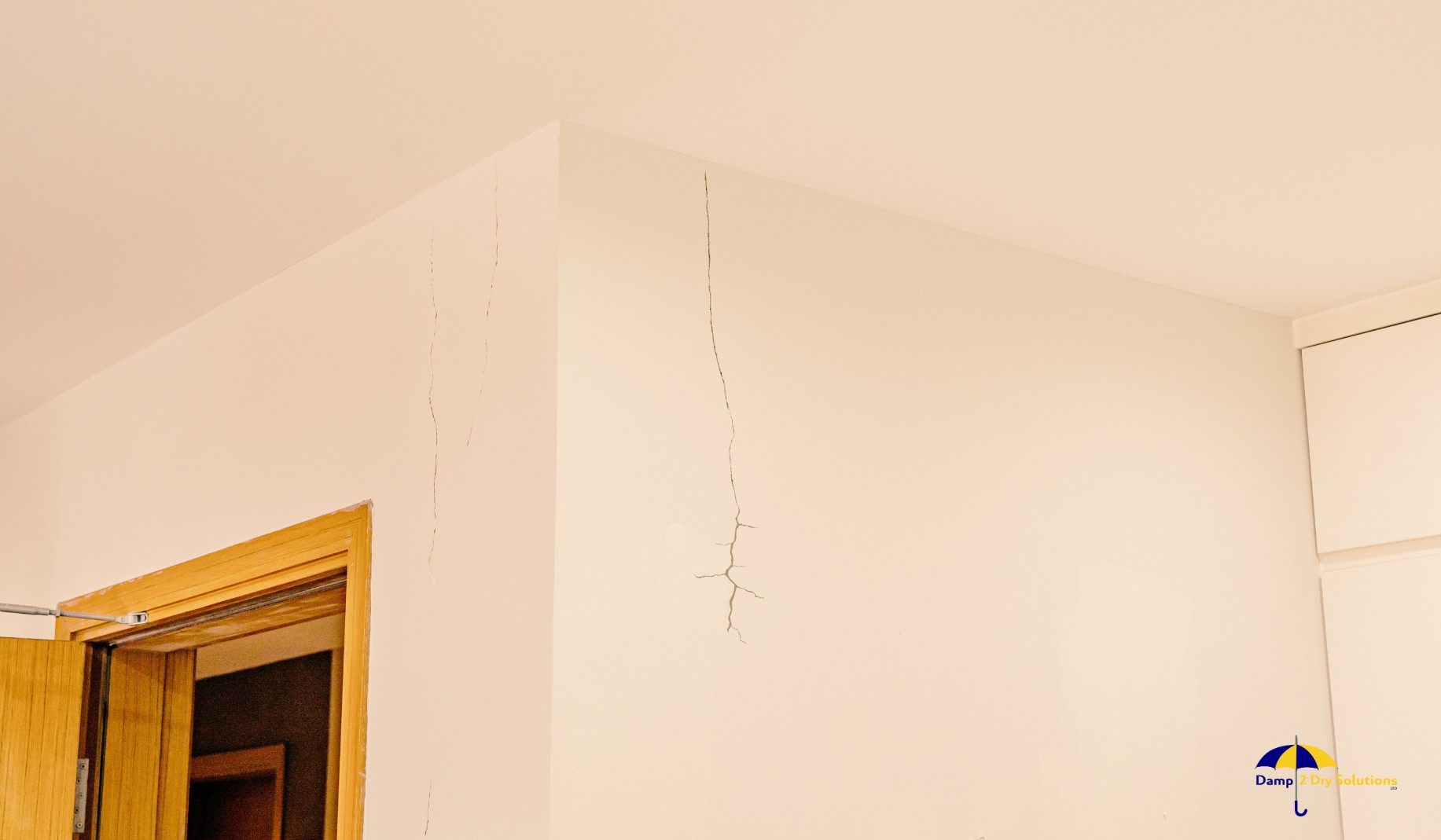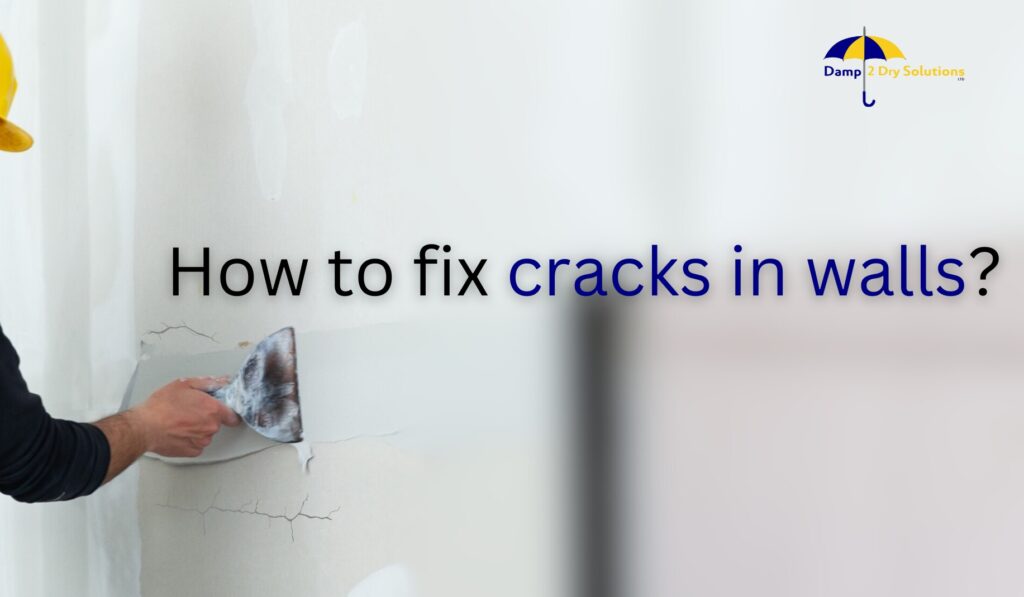
Have you ever noticed a crack in your wall and wondered what caused it and how to fix it? If so, you are not alone.
Cracks in walls are very common in the UK, especially in older buildings. They can be caused by various factors, such as changes in temperature, humidity fluctuations, vibrations, and the natural settling of structures.
However, not all cracks are the same. Some are harmless and easy to fix, while others are signs of serious problems that need professional attention.
In this blog post, we will explain the different types of cracks, how to identify them, and what to do when you spot them.
Types of cracks in walls
Cracks in walls can be classified into three main categories: hairline cracks, diagonal cracks, and wide cracks.
Hairline cracks
Hairline cracks are thin and shallow cracks that usually appear on plaster or drywall. They are often caused by minor shrinkage or expansion of the materials due to changes in temperature or humidity.
These tiny cracks, which are less than 1 mm wide and are found on interior walls, are easily fixed with filler and paint and do not pose a structural risk.
Diagonal cracks
Diagonal cracks are slanted cracks that usually appear on corners, near windows, or above doors. They are often caused by differential settlement of the foundation, which means that one part of the house sinks more than another.
These cracks are caused by excessive moisture, damp, poor drainage, or tree roots. These types of cracks indicate a structural issue and may worsen over time if left untreated. If they are wider than 5mm or extend to the ceiling or floor, they require professional intervention.
Wide cracks
Wide cracks are large and deep cracks that usually span across the entire wall or ceiling. They are often caused by severe foundation movement, such as subsidence, heave, or landslip.
Subsidence occurs when the ground beneath the house collapses or sinks, while heave occurs when the ground beneath the house expands or rises.
A landslip occurs when the ground beneath the house slides or shifts due to erosion or slope instability. Wide cracks can pose a serious threat to the stability and safety of the house and may require extensive repairs or even demolition.
How to fix cracks in walls

The best way to fix cracks in walls depends on their type, size, and cause. Here are some general guidelines for repairing cracks in walls:
Hairline Cracks – If a property is suffering from hairline cracks, you can use fine-grit sandpaper to smooth the surface and then apply a thin layer of filler or spackle with a putty knife.
Let the filler dry, and then sand it again until it is flush with the wall. Finally, apply a coat of primer and paint to match the wall colour.
Diagonal Cracks – For diagonal cracks, you may need to consult a professional to determine the cause and extent of the foundation movement. Depending on the severity of the problem, you may need to install underpinning, piers, or helical screws to stabilise the foundation and prevent further cracking.
After the foundation is fixed, you can use mesh tape and joint compound to cover the crack, and then sand and paint the wall as usual.
Wide Cracks – If you see wide cracks in your home, you should contact a structural engineer or a building surveyor to assess the damage and recommend the best course of action. You may need to replace the entire wall or ceiling or even relocate to a safer place if the house is deemed unsafe.
You should also check your building insurance policy to see if you are covered for the costs of repairing or rebuilding your house.
Structural repairs
Sometimes, cracks in walls are only one of the problems that need to be addressed. There may be other underlying issues that affect the integrity and stability of the wall, such as weak or damaged lintels, loose or corroded wall ties, or insufficient or inadequate anchoring.
In these cases, you may need to consider structural repairs, which are specialised techniques that aim to restore or enhance the strength and durability of the wall. Some of the common types of structural repairs are:
Crack Stitching: Stainless steel bars are inserted into the mortar joints across the crack and grouted in place to complete the crack stitching process. This creates a strong bond that stabilises the wall and prevents further cracking.
Lintel repairs: This involves replacing or reinforcing the lintels, which are the horizontal beams that support the weight of the wall above openings, such as doors or windows. Lintels can crack, sag, or corrode over time, causing the wall to collapse or deform.
Fixing these repairs may require replacing or supporting the damaged lintels with steel plates, brackets, or resin.
Structural anchoring: Structural anchoring entails the installation of anchors, which are metal rods or wires inserted into the ground or nearby walls before being fastened to the wall that has to be fixed. This provides extra support and resistance to the wall, especially in cases of subsidence, heave, or lateral movement.
Cavity wall ties: This involves replacing or adding wall ties, which are metal strips or wires that connect the two layers of a cavity wall. Cavity walls are walls that have a gap between them, which provides insulation and prevents dampness.
Wall ties can deteriorate or fail over time, causing the wall to bow, crack, or collapse. Cavity wall ties can be installed using mechanical or resin methods, depending on the condition of the wall.
Conclusion
Cracks in walls are not always a cause for alarm, but they should not be ignored either. By knowing the different types of cracks, their causes, and their solutions, you can take the right steps to fix them and protect your house from further damage.
If you are unsure about the severity of a crack, it is always advisable to seek professional advice and assistance. Remember, prevention is better than cure, so make sure to maintain your house regularly and check for any signs of cracking or movement.
If you need help, contact or visit Damp2Dry Solutions Ltd for Crack Stitching, Lintel Repairs, Structural Anchoring, and Cavity Wall Repair. We will assist you in resolving the issue and arrange a survey for your property, providing the best solution and necessary repairs for any structural problems.
